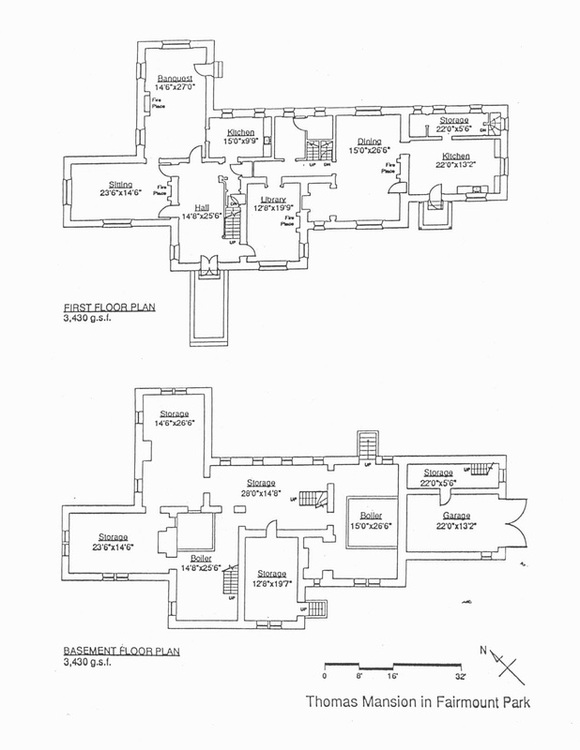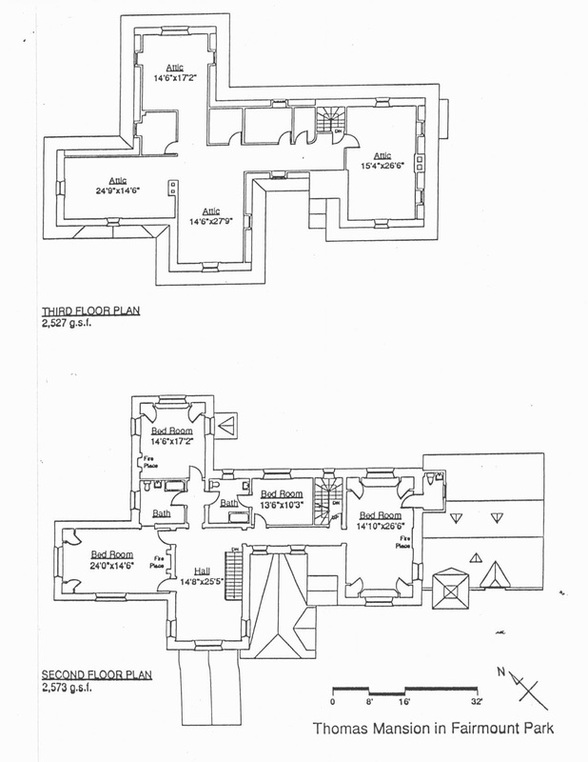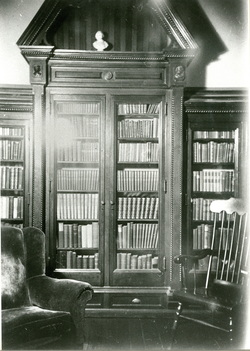I had the opportunity to visit the beautiful Ebenezer Maxwell Mansion (200 West Tulpehocken Street, Philadelphia, PA 19144). This dynamic house museum is a great example of Victorian style. The first floor of the mansion has been restored to reflect the trends of 1860s and the second floor to the late 1870s after the Centennial Exposition.
Diane Richardson (Richardson Interiors), Executive Director of Ebenezer Maxwell Mansion, provided me with a wealth of knowledge regarding Victorian interiors while giving a comprehensive tour of the mansion. Diane's explanation of the interior restoring processes of the mansion helped shaped my understanding of preserving the past through the house museum setting. It was valuable to learn of the resources and methods E.M.M. staff used to research and determine what the home should look like and how it would be interpreted by visitors. It was also useful to learn how the interior elements were acquired. Each piece of furniture and every object was infused with either a story or lesson about the Victorian taste or time period. What I learned from my trip to Ebenezer Maxwell Mansion and Diane: - Architectural style does not have to reflect interior style, especially during the Victorian period. - Dining rooms were usually carpeted. - Popularity of Renaissance revival and Rococo Revival furniture. - The prominence of heavy window treatments with cornices, under-curtains, lambrequins, tassels, valances, and drapery panels. - The use of gold within fabrics, frames, decorative arts, and gasoliers promoted the reflection of light in darker spaces. - The class of the homeowner was marked by expensive bric-a-brac, wall hangings, and carpets. - Displays of nature in glass cases ( at E.M.M. a glass case held preserved hummingbirds) were popular room enhancing elements. Seashells were also often displayed on shelves for bric-a-brac. - An intricate dining room sideboard was a sign of wealth and often had food related details. Vocabulary Word: lambrequin - Similar to a valance; a short ornamental drapery over a window casement. Conclusions from visit: - Carpeting was present in the dining room and library of Thomas Mansion. - Shelving in the library must have had space for bric-a-brac. - Gasoliers were probably used. - the fireplace mantels served as space to display objects of status. - an intricate sideboard was in the dining room. - the windows of the dining room were most likely elaborately treated. New directions: - Examine The American Woman's Home by Catherine Beecher and Harriet Beecher-Stowe. - Explore the Cooper-Hewitt collection of wall coverings, carpets, and textile related patterns. - Consider the level of craftsmanship within the fireplace mantels, wainscoting, and wood-work to help determine the quality of carpeting and rugs. - Establish a layout for the library. Today I visited the Urban Archives at Temple University. According to article published in Philadelphia's The Evening Bulletin, the first floor of Thomas Mansion was "covered with rare and valuable oil paintings" and contained "costly rugs, bric-a-brac and heirlooms."
The will of Mr. Thomas as described by The Evening Bulletin claims that $120,000 and all household furnishings and belongings were bequeathed to Caroline Sheetz Thomas. In an published within a a few years after Mr. Thomas' passing Caroline Sheetz Thomas made this compelling remark regarding the future of Clifford Park and the two residences on the estate: "My husband was very fond of this old building and was anxious to preserve it as a ruin. Surrounded by shrubbery and towering trees and associated with events in his past life, he could not bear to see it razed. He loved flowers, with which the estate abounds, and he loved children. I hope the Park Commission will preserve intact the mansion as a place for some one, it being such a fine building." I also found myself wrapped up in the descriptive language used to paint a picture of the landscape Mr. Thomas and his gardening staff cared for lovingly. Rare plants, flowers, trees, roses, fruits, and vegetables flourished on the property. The collaborative nature of this project, or really any preservation related project can not be understated, and I look forward to working with the welcoming and helpful staff at the Urban Archives department at Temple in the near future. The photo attached to this entry is of the library bookshelves before the space became use for storage. One can imagine the great collection of books Mr. Thomas possessed. |



 RSS Feed
RSS Feed